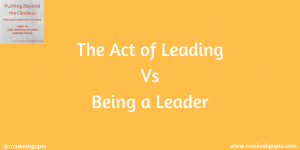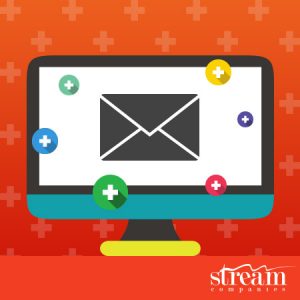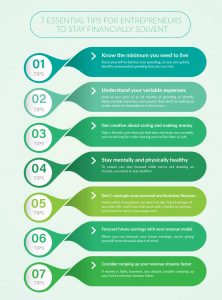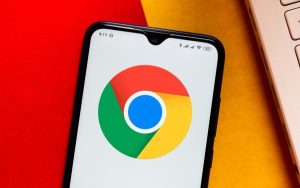The Internet of Things is on the horizon of content creators and data scientists alike, though many have a guarded stance on the subject right now. So what sort of effect can digital marketing expect from the Internet of Things?
Whenever the ‘Internet of Things’ is mentioned the first place my brain goes to is my fridge. I mean, that tends to happen anyway, only in this case my fridge talks to me. It tells me what it’s missing rather than having me guess and I end up buying way too much cheese. Mind you, can you buy too much cheese?
It does sound sort of fantastical in a slightly boring way, and I’m still unconvinced as to how much such a thing would enhance my life. But I don’t think I’m ‘there’ yet.
While a fridge that tells me about my dairy-based shortcomings might not be my idea of a utopian future, the Internet of Things (IoT) of course promises to be much, much more. It’s set to be the connective tissue that holds together this body of parts we’ve been growing these past few years. And the content marketing world needs to get there, pronto.
Their clients’ most exciting future opportunity
Not just future importance
The marketing community foresees the IoT as a massively important future shift, as it should. But in terms of fitting it into their marketing strategies right now, a significant proportion is waiting for a technological advancement beyond a talking fridge, which is rather short-sighted. For a start, BI Intelligence reckons that connected-home device sales will drive over $ 61 billion in revenue this year, rising dramatically to $ 490 billion by 2019. So we’re well on the way there.
More to the point, however, imagine for a second that you’re back in the mid-‘90s: the mobile revolution is in full swing, the internet as we know it today is in its infancy and your hairstyle is incomprehensible. Now imagine you are one of a handful of people that can confidently predict the arrival of the smartphone. You wouldn’t dream of not incorporating that knowledge into your future plans, would you?
But that’s sort of where we find ourselves today. According to Technology for Marketing/Pure360’s recent research Future Marketing Technology 2016, 82% of marketers see the IoT as having ‘future importance’. Just 28% of them are investing in it. Meanwhile, and perhaps more tellingly, Econsultancy’s Digital Trends 2016 reports that just 6% of marketers see the IoT as something of importance right now, but 20% of agency marketers see it as their clients’ most exciting future opportunity.
A third of respondents say they’re waiting to see how things develop
Just under a third of respondents say they’re waiting to see how things develop, and moreover there’s a general lack of resources compounded by a lack of senior buy-in. Understandable, of course, but this is often the nature of getting ahead of the game.
The problem is also a simple fact of not being able to see the opportunity in a technology you can’t necessarily test. Sure, wearable tech is now a thing, but for instance it recently emerged from the Digital Content Summit 2016 that the IoT wouldn’t be truly integrated until connected cars enter our daily lives en masse. But there are opportunities to explore, and there are marketers taking advantage of them.
Real time data
The purpose of technology is as a facilitator; it makes our lives easier. Or more fun. Or both. From a marketing standpoint the obvious advantage of the IoT is the wealth of data you can glean from seeing your products being used and your customers using them, in real time. This in turn can help to personalise your message and adapt to customer needs, in real time. In other words, context will usurp content as king.
It also means that marketers need to view the customer journey in a whole new way. Crucially, you can see what the customer is experiencing at every stage in their buying cycle and lifecycle thereafter. In a recent report from IBM, Key Marketing Trends 2016, Josh Rochlin, Global Business Leader for IBM Mobile Customer Engagement says:
“As more things become connected, marketers will be challenged to act and react based on their customers’ interactions… Whereas before you could engage your customers when they were ‘in store’ or ‘on screen’, you’ll now be challenged to engage them with the right message at the right time as they interact with the newly hyper-connected IoT.”
It’s seeing your products being used and your customers using them, in real time
Behaviour steering
One industry where this seems due to happen in a big way is in insurance. FC Business Intelligence recently published its research Insurance IoT Digital Report: Insurers Enter the New Connected World, which reckons that IoT in insurance is moving out of the early adopter phase and into the mainstream. It cites a figure that nearly a quarter of insurance company executives see potential for the IoT in ‘behaviour steering’. This could be in the context of risk prevention for health insurance, whereby the content associated with certain connected devices could motivate and educate on lifestyle choices that promote, for example, disease prevention.
Respondents from the report also pointed out that such a feature would need to genuinely enhance people’s lives and experiences for them to engage with the insurance company. There’s a very delicate balance to be struck in what sort of content is presented and how, as any ‘big brother’-esque application would turn customers away sharpish.
Incidentally, around a third of insurance executives reckon the next 12 months will be critical in the onset of the IoT. Given that insurance underwrites so many areas of business, it’s not crazy to think that numerous other industries can’t be far behind.
A truly valuable experience
This idea of a valuable user experience – in other words, of life enhancement – is something that dominates the content marketing world in 2016 and that ideal looks set to be a hallmark of the IoT.
A fridge that tells me I need cheese is, at least, useful. A fridge that advertises cheese at me is, at best, annoying. And therein lies the difference between using data and insight to provide real value, as opposed to using data to inform intrusions into one’s life. That’s more akin to someone finding out you’re away on holiday from your hotdog-legs Facebook update and burgling your house. It’s just bad etiquette.
At the core of the IoT are valuable experiences on connected devices. Ofcom said that in January 2015, over 40 million devices were connected via the IoT, and set to increase eight-fold by 2022. You thought Big Data was big now? You ain’t seen nothing yet.
Google for example bought Nest Labs, maker of smart thermostats and smart smoke detectors, a couple of years ago for $ 3.2 billion. These appliances gather intelligent data based on how consumers use them, to the point that they can programme themselves according to typical user behaviour. The thermostats can detect when a user is not home, for example, and choose to conserve energy.
This is the kind of level we’re currently at. Gartner, the tech researcher, considers there are two major classes of connected ‘things’: cross-industry things like smart light bulbs and building management systems which are used to save money across entire networks or sites; and more industry-specific things like connected hospital devices or shipping container sensors and trackers. By 2020, cross-industry devices look set to dominate, feeding a wealth of data from numerous sources.
It’s set to be the connective tissue that holds together this body of parts we’ve been growing
Early adoption is critical
As it stands now, how we manage all that data will be instrumental in how we prepare for the IoT. There’s going to be a lot of it. For some it will be overwhelming, but for those that can segment it and analyse it properly, there will be opportunities arising from the very deepest insights about how your products or services are being used, as they’re being used.
Which is why early adoption on the part of marketers right now is so important. Those that have, or are making the effort to develop the analytical nous to read all that data, coupled with the creative vision to use it to add deeper, more personalised meaning to a user experience – i.e. providing context to high quality content – will be the future rulers. Just as content marketing evolved from the wearied world of the Mad Men, so too will the IoT be a further deepening of an increasingly emotion-led drive for better marketing, based on nurturing relationships that improve people’s lives rather than intrude upon them.
Context is everything. What you have is a wealth of data about very specific points in customers’ lifecycles and how they’re using your products or services. This is value-added, real-time information on an unprecedented scale and companies’ abilities to contextualise this data will form a part of their own value proposition – their USP. This ability means you can adapt to even more specific customer needs and create content that speaks to your audience on whole new and personal level.
This content can be highly segmented, and very specific. Practically speaking you need savvy data analysts and adaptive content creators to create all this relevant content. But the data you gather informs the sort of content that can speak to just a tiny proportion of your audience. It’s almost as if it’s face-to-face – one-on-one communication – and with the right resources and planning there’s really no limit to how many segments of your audience and potential audience you can reach on a very personal level.
The IoT provides opportunities to address the most specific customer needs. Even a fridge can be incredibly telling about someone. Whether or not you need more cheese is really just the thin end of the wedge.
Digital & Social Articles on Business 2 Community
(21)






